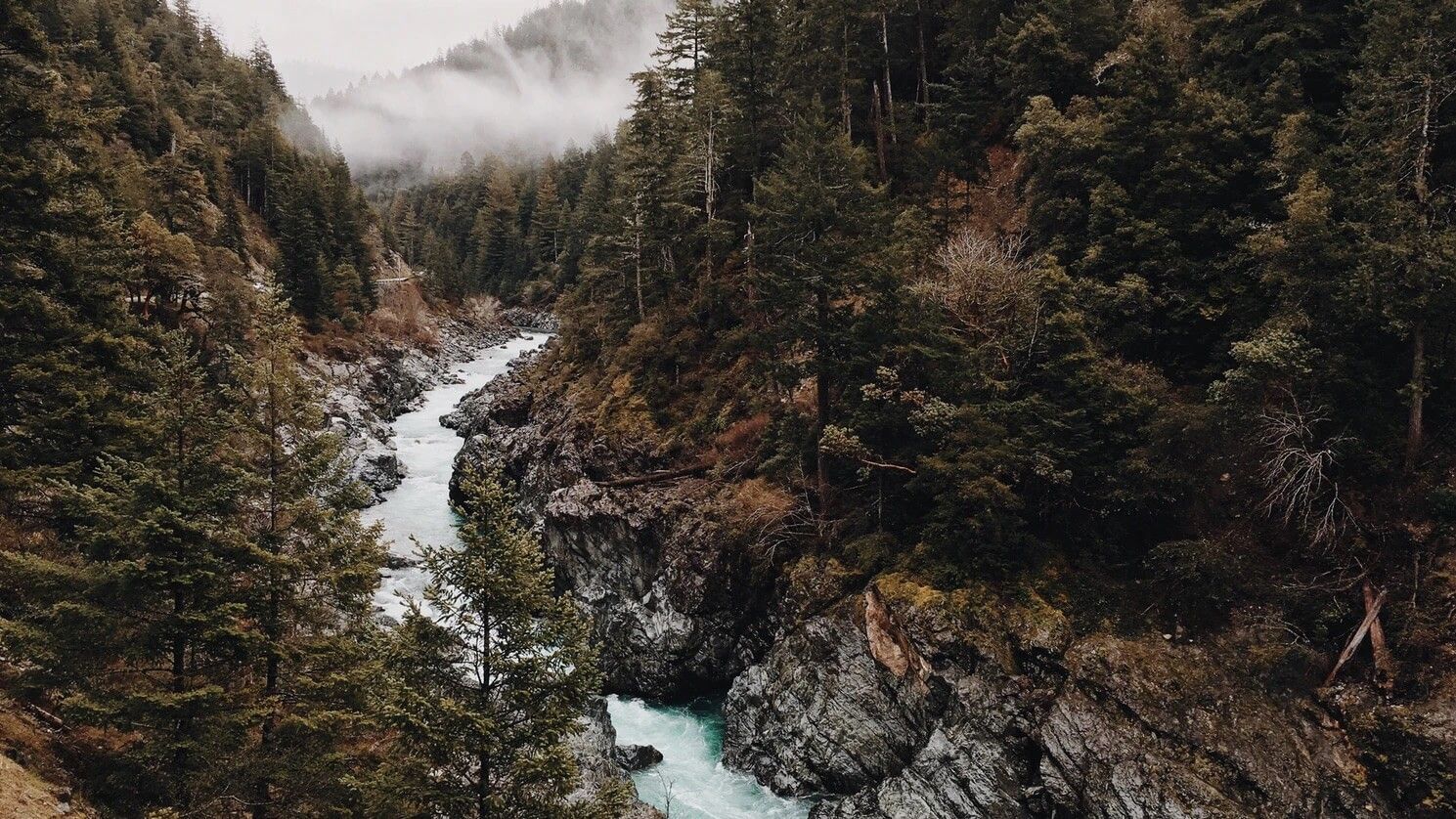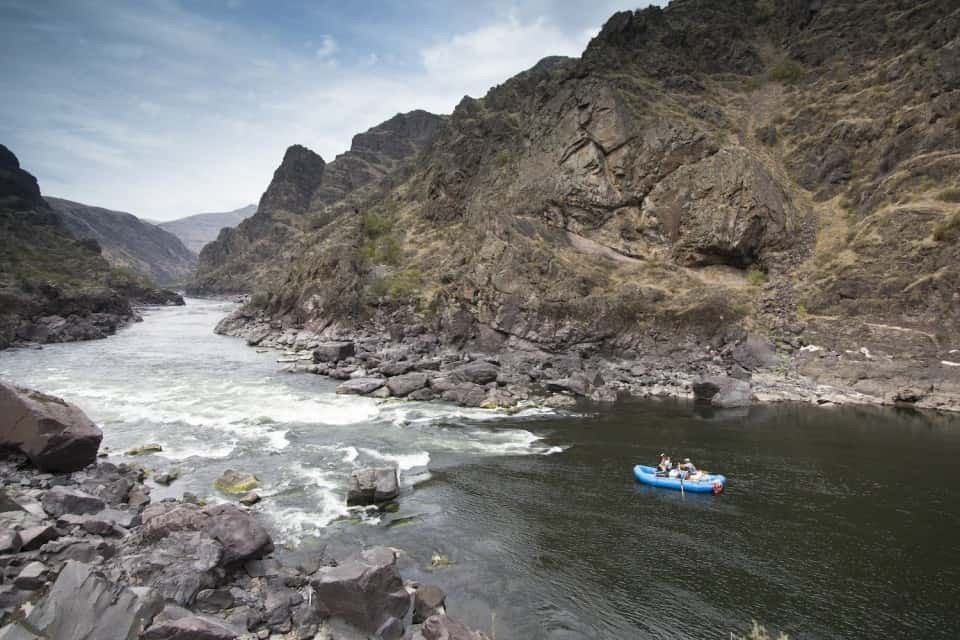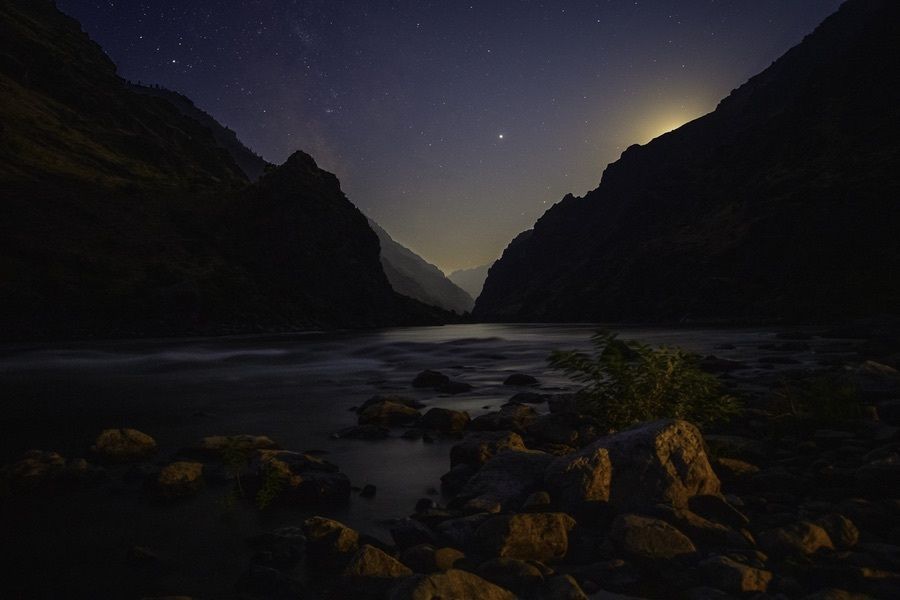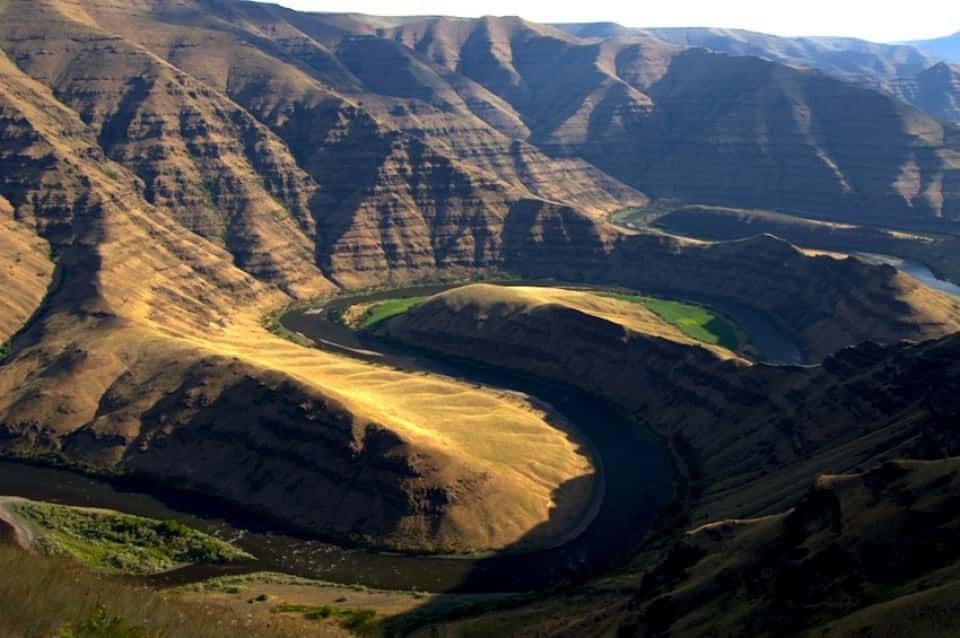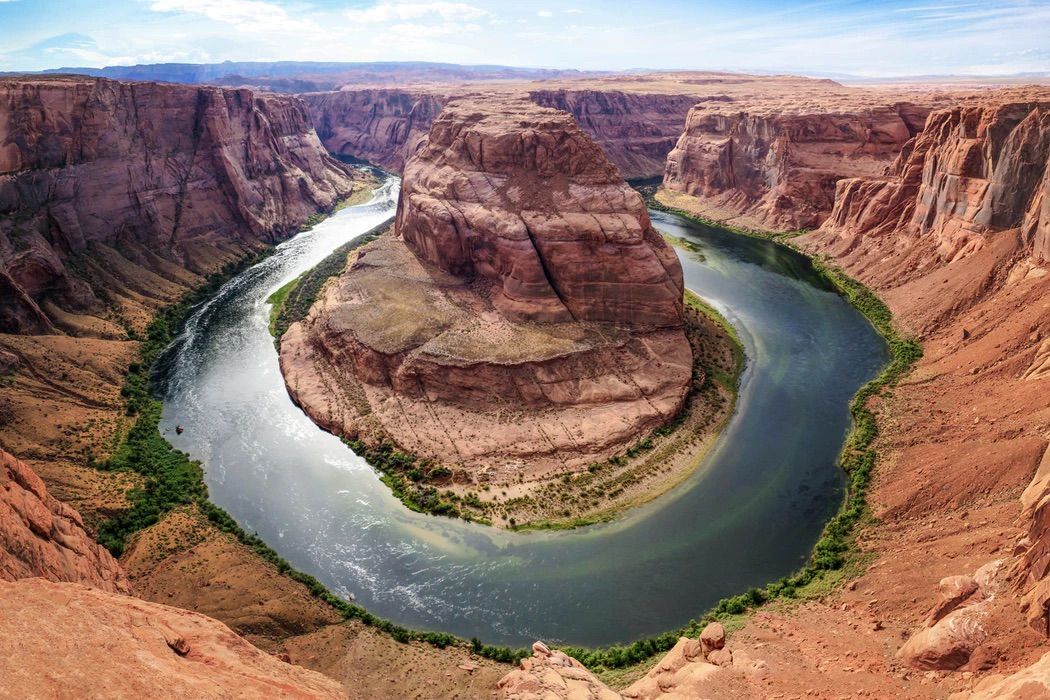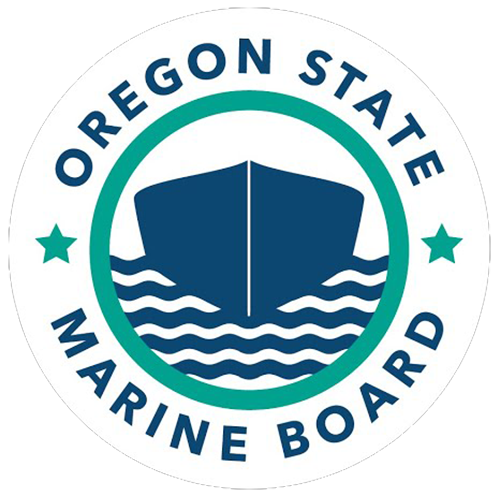Top White Water Destinations in North America
Looking to get a taste of the wild side here in North America? There’s no better way to experience the wonders of American rivers than with white water rafting. In addition to the thrill of the white water rafting experience, you also get a taste of the natural world in a way you can get anywhere else.
If you’re wondering what is white water rafting, this guide has you covered. We’ll explain the white water rafting meaning, and give you the lowdown on how to enjoy it safely with the help of Whitewater Raftings from Winding Waters. Read about some of our favorite white water rafting rivers in North America!
Key Takeaways
- White water rafting offers an unmatched mix of adventure and natural beauty, letting you explore North America’s wild rivers like the Salmon, Snake, and Colorado in ways no other activity can.
- The
best white water rafting destinations—from Idaho’s Salmon River to Maine’s Kennebec—combine scenic wilderness, rich history, and rapids for every skill level, from beginners to thrill-seekers.
- Understanding rapid classifications (Class I–VI) is crucial for safety and enjoyment; families can enjoy Class II–III waters, while advanced rafters can chase Class IV–V challenges.
- The
Pacific Northwest and Rocky Mountains feature world-renowned rafting routes that balance adrenaline-pumping rapids with serene landscapes and wildlife encounters.
- Booking with Winding Waters River Expeditions ensures guided, all-inclusive rafting trips where expert guides handle safety, comfort, and logistics—so you can focus on the ride
- To make the most of your next adventure,
plan around seasonal flows—spring brings high water for thrill-seekers, while summer offers calmer conditions perfect for families and first-timers.
What Is White Water Rafting?
If you’ve ever asked what is river rafting or why is it called white water rafting, the answer lies in the bubbling, fast-moving water that creates rapids. The thrill comes from navigating these natural obstacles in an inflatable raft. You'll often see the term used interchangeably in other regions—like what is white water rafting in Spanish or the local experience of rafting en el rio atuel. We’ll also break down the white water rafting definitions to help you better understand this popular outdoor activity.
Best Rivers for white water rafting
Pacific Northwest Rivers
Salmon River
Location: Idaho
Rapid Class: III-IV
A primary tributary of the mighty Columbia River, Idaho’s Salmon River is universally considered one of the best white water rivers in not only North America, but the world.
What makes this river so special? First off, it offers a unique and unforgettable trip through the largest section of roadless wilderness and the longest section of undammed river in the lower 48. The section we raft, a 72-mile section known as “The Canyons,” is endless fun and whitewater for the whole family.
You’ll enjoy alpine forests winding their way to desert stretches, with a high variant of wildlife and flora & fauna throughout. This is truly a magical experience for any lover of white water and wild places.
Snake River
Location: Idaho
Rapid Class: II-IV
The Snake River is also a major tributary of the Columbia River. With its pristine headwaters in Wyoming, this iconic Northwest river winds through a remote section of Idaho. Our most popular trip on the Snake , a 79-mile trip from Hells Canyon Dam to Heller Bar, is a classic white water section. This trip weaves through North America’s deepest river canyon in North America, Hells Canyon.
This river is also loaded with a world class rainbow trout fishery and is loaded with historical sites, providing a rich cultural experience. This is truly the way white water rafting was intended to be enjoyed.
Grande Ronde River
Location: Oregon
Rapid Class: II
The final river on the list in the upper Columbia River watershed is the Grande Ronde River. This iconic river is world famous for its summer steelhead run, but is also a wonderful family-friendly class II white water float.
This 3 day float meanders through a roadless wild and scenic section of the “Ronde,” weaving through ponderosa pine forests and a deep basalt river canyon. This mellow float is great for children, but also for enjoying the scenery and experiencing the best Eastern Oregon has to offer.
Our favorite way to experience this trip as fly fisherman is through 5-day guided fly fishing floats . This lets you enjoy just how wild this river is and experience nature on a whole other level. There is truly no better way to get to know a river than to raft and fish it!
Rocky Mountains & Southwest Rivers
Colorado River
Location: Utah and Arizona
Rapid Class: II–IV
There may not be a river more iconic for rafting than the Colorado River. While it begins in Rocky Mountain National Park, its most legendary whitewater flows through Utah and Arizona.
The crown jewel is the 226-mile Grand Canyon section—remote, massive, and unforgettable. A 2-week wilderness journey through red rock canyons and deep desert gorges.
Spring brings high flows and big thrills; summer offers mellow floats for families and newcomers.
Arkansas River
Location: Colorado
Rapid Class: III-IV
Starting in the mountains of Colorado and flowing all the way to the Mississippi River in Arkansas, the Arkansas River is likely Colorado’s most well known white water river. With over 100 miles of incredible rafting opportunities, there’s something for everyone.
The Arkansas actually drops 5,000 feet from its headwaters near the continental divide in its first 125 miles. The river flows through multiple incredible zones, including the scenic Browns Canyon National Monument.
Whether you’re going through Brown’s Canyon, wide glacial valleys, or the thrilling Royal Gorge area, the Arkansas is a worthwhile white water bucket list destination for any seasoned rafter.
Southeast Rivers
Chattooga River
Location: Georgia and South Carolina
Rapid Class: III-V
This premier Southeastern river is one of the longest free-flowing (undammed) rivers in the whole country. While the east coast is not often thought of as a rafting mecca, this river should put that thought to rest.
The river is known for a stretch that flows from South Carolina into Georgia and offers 26 miles of continuous rapids. While this river offers rapids for all age groups, in the spring some sections boast class V rapids.
This remote gorge in SEC country is a unique and wonderful experience in a part of the country where wild places are harder to find.
northeast Rivers
Deerfield River
Location: Massachusetts
Rapid Class: II - IV
A unique New England experience, Western Massachusetts’ Deerfield River is a diamond in the puritanical rough.
This Connecticut River tributary, once a legendary Atlantic Salmon stronghold, provides some of the best white water opportunities in New England. This scenic river winds through New England villages and iconic Berkshire landscapes, with class II-IV whitewater throughout the journey.
While not as remote as some other rivers on this list, the Deerfield river is one of the more unique rivers. Nowhere else will you be able to get a taste of old, quaint, history-filled villages as you charge class IV rapids.
Kennebec River
Location: Maine
Rapid Class: III - IV
Draining a large part of Maine and residing in the heart of vacationland, The Kennebec River is about as close to a wilderness experience as you can get in the Northeastern United States.
The Kennebec River originates in Moosehead Lake in Northern Maine, and flows through backwoods through pristine wilderness. The river offers large rapids and is known for its 6-8 foot waves, providing an exhilarating ride for those hoping to get wet.
This river is a great summer destination when the weather is warm and the river can be run the entire summer (not possible with all rivers in glacier-less New England). The river is also filled with opportunities for swimming, trout fishing, and waterfall hiking. A true summer paradise.
Utah and Arizona
Rapid Class: II-IV
There may not be a river more ubiquitous with white water rafting than the Colorado River. Beginning in the headwaters in Rocky Mountain National Park in Colorado, the best white water opportunities flow through Utah and Arizona.
The most essential white water trip on the Colorado of course goes through the 226 miles of the Grand Canyon. Trips through this red rocked, desert canyon are the definition of remote and big. Lasting 2 weeks, a float through this section is a true wilderness experience.
Beyond the canyon, there is still much to be explored on the southeast’s most prominent and powerful river. No matter where you raft, spring offers more thrilling flows, while summer offers gentler, mild flows for more relaxed floats.
Understanding the Rapids: Classes & Safety
Each rafting river is classified from Class I (easy) to Class VI (extremely difficult). You might be asking:
What is a class 3 rapid?
Are class 2 rapids dangerous?
Are class 3 rapids dangerous?
Let’s break it down. Class 2 whitewater and class 3 whitewater are generally safe for families. As you move up, class 4 white water, class 5 rapids or even class 6 river rafting provide extreme excitement. If you're planning an adventure, it's important to understand the different white water rapids levels, and overall white water classifications.
Experience the best white water rafting in North America with Winding Waters River Expeditions
The upper Columbia River watershed is truly as magical as white water can be. The Grande Ronde, Salmon, and Snake rivers are all unique waterways that provide unforgettable river experiences.
At Winding Waters River Expeditions , we lead fully supported rafting trips down these beautiful rivers. Not only will you get a true wilderness experience, but our guides provide everything you need and a comfortable experience.
Get in touch to learn more about our white water trips and to book the experience of a lifetime next summer! Also, you might want to check our Google Business Profile Reviews to learn more about what other people say about us!
Frequently Asked Questions
Here are some of the most common questions people ask about white water rafting and the best destinations in North America.
What is white water rafting?
White water rafting is an outdoor adventure sport where participants navigate a river’s rapids in an inflatable raft. The “white water” refers to the frothy, fast-moving water created by turbulence and obstacles in the river. It’s a thrilling way to explore wild, scenic landscapes while working as a team to steer through rapids.
What are the best rivers for white water rafting in North America?
Some of the top rivers include the Salmon and Snake Rivers in Idaho, the Colorado River through the Grand Canyon, the Arkansas River in Colorado, the Chattooga River in Georgia and South Carolina, and the Kennebec River in Maine. Each offers unique scenery, rapid classes, and experiences for all skill levels.
What do the classes of white water rapids mean?
Rapids are ranked from Class I (easy, gentle waves) to Class VI (extremely dangerous, expert only). Class II–III rapids are ideal for families and beginners, while Class IV–V offer more intense challenges for experienced rafters. Understanding these classes helps you choose a river trip that matches your comfort and adventure level.
Are Class 2 or Class 3 rapids dangerous?
Class 2 and 3 rapids are generally considered safe for most people, including families and beginners, when guided by professionals. They feature moderate waves, small drops, and manageable obstacles. Wearing a life jacket, helmet, and following your guide’s instructions are key to staying safe and enjoying the ride.
What is the best time of year for white water rafting?
Spring and early summer are often the best times to raft due to higher water levels from snowmelt, which make for more exciting rapids. However, many rivers, like Oregon’s Grande Ronde or Maine’s Kennebec, offer great conditions through summer, providing both thrilling and scenic family-friendly floats.
Which river offers the most iconic white water experience?
The Colorado River through the Grand Canyon is the most iconic white water rafting trip in North America. Spanning 226 miles of desert canyons, towering red cliffs, and powerful rapids, it’s a bucket-list wilderness adventure that combines excitement, solitude, and breathtaking scenery.
What should I bring on a white water rafting trip?
Essential items include quick-drying clothing, secure water shoes, sunscreen, a hat, and a reusable water bottle. Most outfitters provide safety gear like helmets and life jackets. On multi-day trips, guides usually supply camping equipment, meals, and waterproof bags for personal items.
Is white water rafting suitable for families?
Yes! Many rivers like the Grande Ronde in Oregon and the Snake River in Idaho offer Class II–III rapids, perfect for families and first-timers. These trips combine gentle whitewater with incredible scenery and wildlife viewing, making them an ideal outdoor adventure for all ages.
How long do rafting trips usually last?
Rafting trips can range from a few hours to multi-day expeditions. Short trips are great for beginners, while longer ones—like a 3-day Grande Ronde float or a 2-week Colorado River journey—offer full immersion in nature with camping, fishing, and exploration along the way.
How do I choose the right white water rafting trip?
Consider your experience level, desired intensity, and how much time you have. Beginners should start with Class II–III rivers. For a mix of adventure and comfort, guided trips—like those with Winding Waters River Expeditions—are ideal, offering professional support, safety, and an unforgettable wilderness experience.

